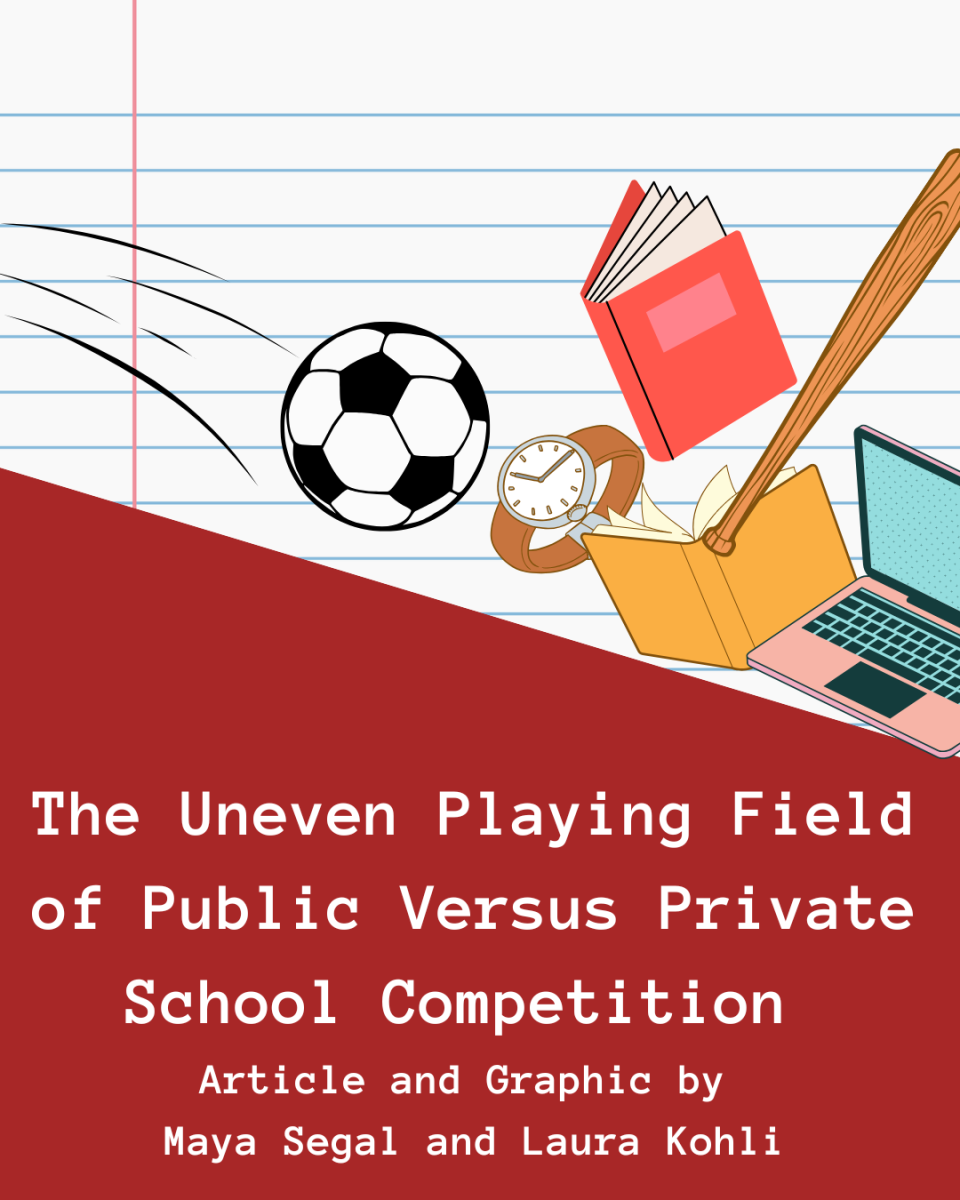Anyone who competes within a school-aligned system, whether it’s sports, competition clubs, or the arts, knows the hopeless feeling of being matched up against a better-equipped private school. It’s an uneven playing field when public schools lack the funding and resources to keep up with private schools, regardless of talent or drive.
The most prominent example of this discrepancy is with sports teams, and for Enloe specifically, the fact that the private school Cardinal Gibbons plays in the same conference as Enloe and other public schools. It’s not just talent that makes a successful sports team. Sports require time, equipment, facilities, and coaching, and the pure amount and quality of these resources can be a literal game changer. Private schools obviously have more funding, but they also have room to grow outside of school-assigned assets, whereas public schools are bound by their district’s budget.
It may seem intuitive that if a public school can raise enough money to fund a project, that project should be initiated. But in reality, it’s not as simple. Ostensibly, a booster club paying for a turf field is a gift; however, this “gift” quickly becomes a burden when the costs of repairs and maintenance fall to the district, which can’t afford add-ons like these for many schools. When a public school builds new infrastructure, it becomes property of Wake County. With over 200 schools, Wake County doesn’t have the funds to maintain all the optional improvements. Private schools like Gibbons are not school systems, therefore, they don’t have to worry about upkeep across multiple schools.
It’s not just the things that give private schools an advantage, though; it’s the people as well. Public schools are limited by the district boundaries that determine where students are able to attend school. However, Gibbons was able to set a 25-mile radius for athletics, allowing them to pick and accept students from not only Wake County, but Orange, Durham, Chatham, and others. The students aren’t the only people who give private schools the upper hand—their coaches contribute to the inherent superiority too. At Enloe, many of our athletic coaches are PE teachers, but it’s also common to find a marketing or cooking teacher on the field. Though these teachers are undoubtedly still knowledgeable in their sport, it’s not the same as having a better-paid faculty member whose primary goal is to coach.
So, why haven’t these glaring inequalities been addressed? Why is Gibbons still in Enloe’s division? Well, good news: starting in the 2025-26 school year, Enloe and Gibbons will no longer play in the same conference. But this isn’t a motion to address systemic flaws or promote fairness. Schools are organized into conferences based on the size of their student bodies, and Gibbons and Enloe are now too different in population size to be in the same group. Gibbons will still be playing against public schools; Enloe is just lucky enough to have escaped its clutches. The conference shake-up is a purely logistical decision, with no consideration of the equality it creates or diminishes.
Public schools aren’t just athletically at odds with private schools; their key differences affect every part of student life, including clubs. If you’ve ever tried to fundraise for an Enloe-affiliated organization, you know that the rules around students taking money are cumbersome. Public school students aren’t allowed to handle money, ruling out any fundraising options that require selling things, such as a bake sale. For clubs trying to make real change around a school and community, not having access to a stable source of funds from a budget or the ability to raise money effectively can damage their reach and overall success. While public schools aren’t directly at odds with private schools in terms of volunteering and interest clubs, they often both have organizations that fulfill the same niche in a community. Private schools, which have fewer regulations and plainly more wealth in their school, often have more resources than a public school-affiliated club could even accept. Money isn’t everything, but when a private school club can do more just because they have access to more, it can be frustrating to people bound to public school bureaucracy.
Though competition clubs can range from speech and debate to arts-based extracurriculars, the discrepancies are still the same, especially the gaps in funding and resources. For example, take Crescenloe, Enloe’s a cappella group. Their main competitions are regional, and similar to the sports brackets, there are no parameters preventing private schools from facing off with public schools. The result: Crescenloe and other public school groups are in the same bracket as private schools dedicated to the performing arts, who can afford private coaches, choreographers, and much more practice time. This inequality extends to the world of speech and debate too. Debate usually takes a lot of work—the cases, or main arguments, have to be written, countless rebuttals have to be anticipated, and more. In the speech and debate sphere, buying a prewritten case and/or rebuttals is legal and can help circumvent this labor. But these files aren’t cheap, and in a public school setting, this money may be harder to come by. Contrast this with private schools, whose students commonly have more money to spend on arguments and defenses, and it’s easy to see the scales tipping.
Just like with sports, though, it’s not only the tangible things that make a difference. At Enloe, speech and debate is a club, but many private schools offer the activity as a class. Because public schools lack the funding to hire a teacher specifically for an elective, an established teacher would have to sacrifice their class time and schedule space to take on the course, without the guarantee of extra money for additional expenses. This difference has many understated implications. A teacher hired solely for a speech and debate class will have much more background information and training specific to the subject, while public schools typically rely on teachers with little background knowledge on the topic to advise the club. Even at private schools without a dedicated teacher for the topic, coaches are often hired to guide the club. Public schools just don’t have this kind of money.
Second, accessibility. Speech and debate’s extracurricular status in many public schools limits the number of students who can participate, as it closes the opportunity to those who can’t get a ride after school. Meanwhile, anyone can take a debate class, ensuring that those passionate about speech and debate get a chance to compete. Third is the precious commodity of time, as having a class dedicated to speech and debate means that students are guaranteed the time to work on their speeches and cases.
The frustration of just being out-funded is exhausting. Losing because of circumstances outside of our control is unfair; public school students work tirelessly with the time and resources available, and we deserve to compete in spaces with an even playing field. Yet it’s important to note that even with the odds stacked against us, Enloe and other public school students still manage to thrive. After all, various Enloe athletes continue to best private school players, Crescenloe got second at the quarterfinals of the International Competition for High School A Cappella, and Speech and Debate won the Congressional debate sweepstakes for the East Carolina district. Ultimately, the persistence, dedication, and leadership skills we learn out of sheer necessity will serve us longer than any high school award or victory.








![What Do We Do [AI]bout This?](https://enloenews.org/wp-content/uploads/2025/04/what-do-we-do-aibout-this.jpg)